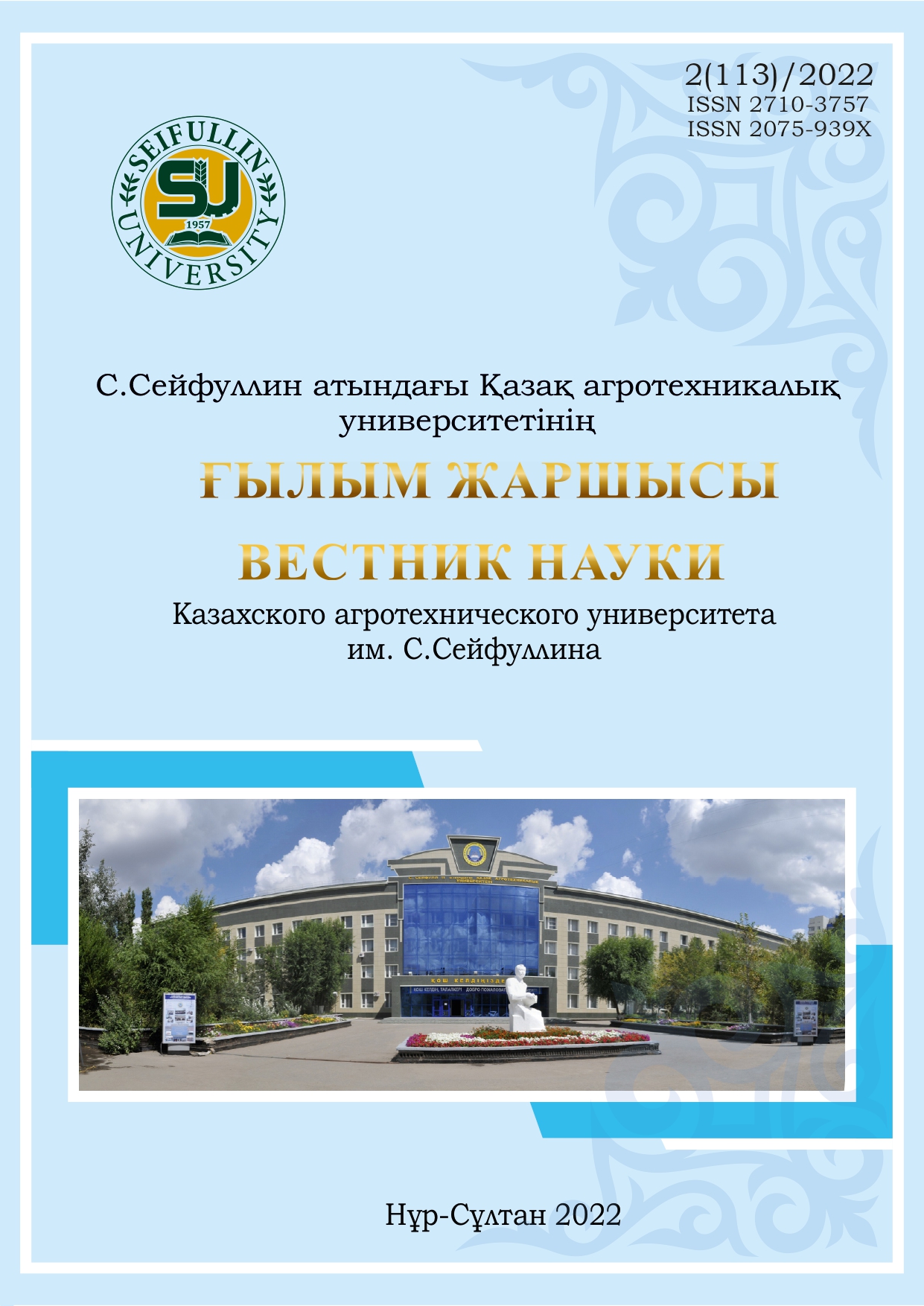INVESTIGATION OF HYDROCHEMICAL PARAMETERS AND PHYTOPLANKTON STRUCTURE OF HYPERGALINE LAKES OF THE NORTH KAZAKHSTAN REGION
DOI:
https://doi.org/10.51452/kazatu.2022.2(113).1021Keywords:
phytoplankton; salt lakes; trophic status; mineralization; taxonomic composition; biomass; biogenic compounds.Abstract
The article presents spring-autumn data for 2021 on hydrochemical indicators and phytoplankton structure of lakes Mengisor and Stanovoe in the North Kazakhstan region. The research is funded by the Science Committee of the Ministry of Education and Science of the Republic of Kazakhstan (grant no. AP09058158).During the study period, biogenic compounds fluctuated within the limits sufficient in concentration for the development of phytoplankton. Representatives of diatoms and green algae were identified in the planktonic algoflora of the lakes. The number of taxa in each reservoir was only 3 taxa. The algocenosis of Lake Mengisor was characterized by the active development of filamentous green algae of the genera Mougeotia and Zygnema, which created 98-100% of the abundance and 99-100% of the biomass. In spring, the total phytoplankton biomass of the lake was determined by the "average" trophic level, and in autumn by the "moderate" one. The phytoplankton of Lake Stanovoe was characterized by the development of true inhabitants of highly mineralized waters, such as Amphora coffeaeformis and Dunaliella salina. In addition to them, single species of the genus Navicula are noted in the plankton of the lake. The core of phytoplankton abundance and biomass was formed due to small-cell diatoms. On the basis of phytoplankton biomass, the trophic category of the reservoir is indicated, which corresponded to a "very low" class on the S.P. Kitaev scale.

